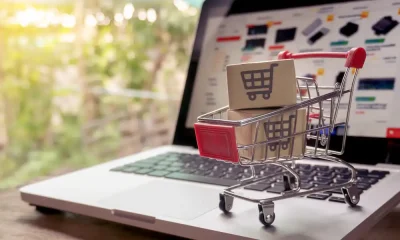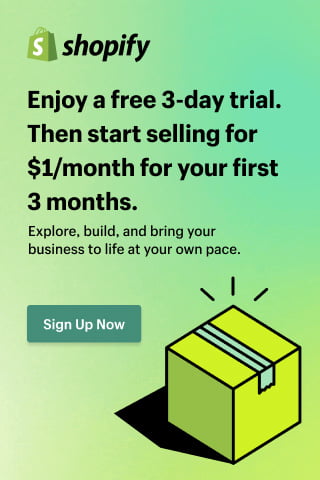Innovation
How To Turn Ideas Into Products

Having a great new product idea to bring to market feels like a breakthrough moment.
Visions of a successful business adventure taking off on day one would start to fill your head. Add to it the thought of finally being able to quit your day job, which doesn’t work for you anymore. But, it takes careful planning and analysis work to move from the product concept to the actual production.
You must think through the different elements leading to a successful product launch.
One excellent decision you can opt to make is to hire custom formulation development services to help you with new product formulation. These companies help entrepreneurs, manufacturers, and distributors successfully turn innovative product ideas into actual, on-the-shelf products.
If you’re interested, read more about how custom formulation development service providers can significantly help you.
Product Development Process Steps
The entire process that custom formulation development service providers follow when turning a product concept into an actual product in the market can be divided into the following series of steps:
- Defining vision
- Validating the concept
- Developing a prototype
- Establishing other needed services
Custom formulation development companies carry out the process for you and can even extend manufacturing support. Below is a detailed look at each of the steps.
1. Defining Vision
You can work with a formulation development expert as you try to envision your product concept. To help you move the idea ahead, it’s helpful to ask one fundamental question: Does your product represent an entirely new concept, or is it an enhancement or improvement to an existing product in the market?
Your idea may be an evolution of a currently marketed product or bring a new, revolutionary concept to the marketplace.
While either way should be acceptable, please keep in mind that it will be easier to establish the value of your product and differentiate it from your potential competitors if there’s a more significant distinction between what currently exists and what your product represents.
Also, greater profitability because of a potentially higher price point results from the unique value of your product. That said, you must fully understand the intended specifications and characteristics of the product you’re looking to create.
If your focus is improving an existing product, you should answer the following questions:
- Can you reduce the cost of a product that’s already being sold?
- Can you improve efficiency if you combine separate functions into one enhanced product?
- Can you increase the levels of performance or efficacy over what currently exists?
- Can you provide a significantly longer service life?
- Can you reduce the total ownership cost?
- Can you save valuable time for the customers?
- Can you impact the health and well-being of the customers?
Creating a definition around your vision for your product idea is about understanding its characteristics and specifications and asking how it will impact the customer buying it, which defines your offering’s perceived value.
2. Validating The Concept
During the concept validation stage, you’ll still work with a formulation development expert from a custom formulation development company. In this process, you have to determine whether the marketplace will be receptive to your product.
Below are several essential points you must carefully reflect on while in the concept validation phase.
What market or markets does your product potentially serve?
Products can generally be business-focused, consumer-focused, or both. To establish your product’s potential size, reach, and price point, you have to know which specific market or markets you plan to sell to.
The concept validation stage is also the right time for preliminary market research. Of course, you need to confirm that your product has a fighting chance at achieving in the market before investing money in manufacturing it. It doesn’t matter how seemingly great your product idea is because it’s useless when there’s no demand for it.
Who will be the primary purchaser or customer of your product?
For example, if your product is consumer-focused, you have to carefully consider the specific market segments to which the product appeals.
Some of the different aspects of a potential customer include the age range of customers to which your product might appeal, the geographical location of the buyer, and whether or not your product appeals to one set of customers having particular interests, like hobbies, etc.
The planning stage involves identifying who will likely buy and use your new product as its essential part, so you must do it as precisely as possible.
3. Developing A Prototype
If feasible, creating a proof-of-concept or prototype for your product will be a worthwhile investment.
You can use the prototype to gauge the interest of your potential buyers and get helpful feedback on your idea. However, prototypes also have a second valuable purpose: to function as a dress rehearsal or dry-run for full-scale production.
A prototype can help test the waters of the production stages, especially if you intend to produce your product in large numbers. It will also help push the materials and components utilized in your product. It’s essential to note that it’s possible that what’s working on paper may not work or may need some tweaking when what’s on paper turns into the cutting of the actual materials.
Furthermore, developing a prototype is one in which formulation development experts can provide guidance. They can also finalize the entire product based on your input after you review the prototypes.
4. Establishing Other Needed Services
After completing all the steps above, custom formulation development service providers can establish other services to help you produce your final product. This is where additional support for packaging, labeling, and shelf-life analysis comes in. Of course, this is also when custom formulation development companies assist you with the complete production through a third-party manufacturer or your internal manufacturing facility, if you have one.
Conclusion
It doesn’t matter what product type you’re developing. You have to put in all the necessary preparation, from researching, planning, and prototyping to actual manufacturing. It’s the only way to set yourself up for success, and that’s precisely how custom formulation development services can help you.









